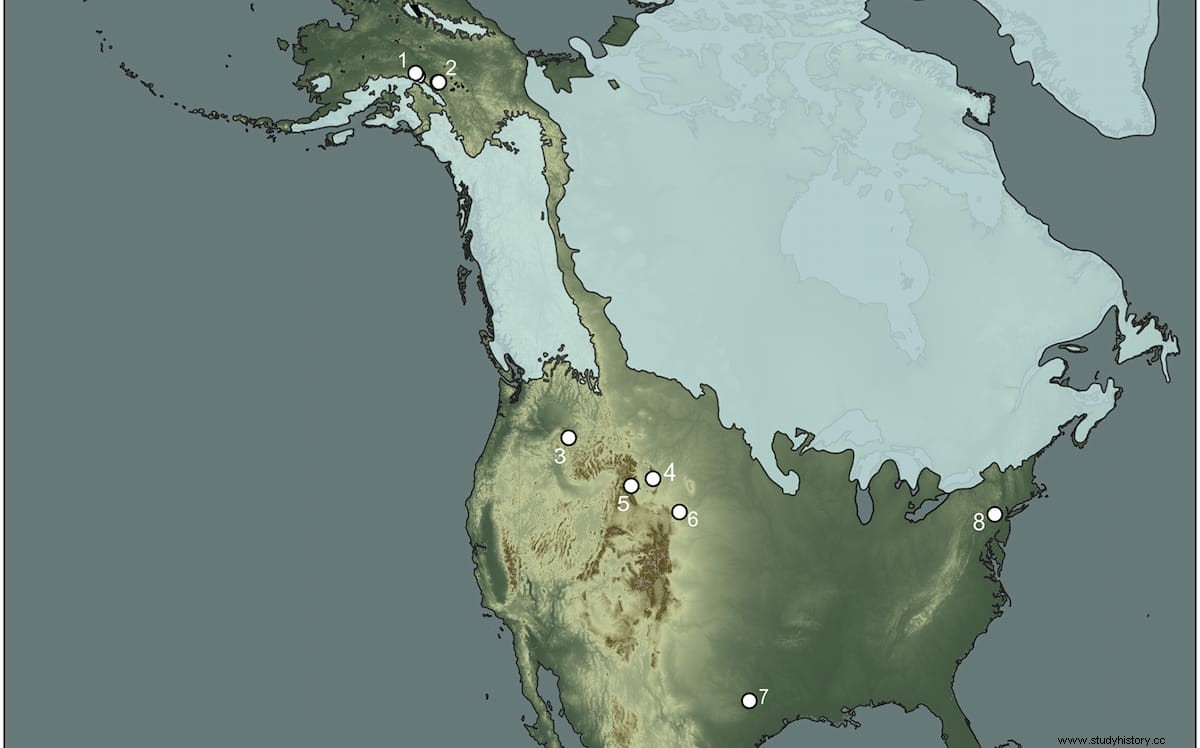A new analysis of archaeological sites in the Americas challenges relatively new theories that North America's first human inhabitants arrived before the migration of peoples from Asia across the Bering Strait.
The analysis, by University of Wyoming professor Todd Surovell and colleagues at UW and five other institutions, suggests that misinterpretation of archaeological evidence at certain sites in North and South America could be responsible for theories. that humans arrived long before 13,000-14,200 years ago.
The researchers' findings appear in PLOS One , a journal published by the Public Library of Science . The article is the latest development in the debate over the peopling of the Americas, in which some are now challenging the long-held consensus that the first Americans were hunter-gatherers who entered North America from Asia via the Beringian land bridge. about 14,200 years ago, and then spread south between two large glaciers that then covered much of the continent.

Surovell and his colleagues' conclusions are based on an analysis of buried archaeological deposits, using a new statistic called the Apparent Stratigraphic Integrity Index that they developed. While the stratigraphic integrity of early Alaskan archaeological sites is high—producing strong evidence in support of unambiguous human occupation—sites from more southerly locations that point to possible earlier human occupation show signs of artifact admixture. between multiple time periods.
If humans managed to traverse the continental ice sheets significantly before 13,000 years ago, there should be clear evidence of this in the form of at least some stratigraphically discrete archaeological components with a relatively high artifact count. So far, there are no such tests , Surovell and his colleagues wrote. (Our) findings support the hypothesis that the first human arrival in the New World occurred at least 14,200 years ago via the Beringia Bridge and approximately 13,000 years ago in temperate North America. Strong evidence of human presence prior to these dates has yet to be identified in the archaeological record .

Specifically, the new analysis compared the stratigraphic integrity of three sites that it is argued contain evidence of earlier human occupation - two in Texas and one in Idaho - with the integrity of sites in Alaska, Wyoming and Pennsylvania. The three sites that are said to be older than 13,000 years showed significant mixing patterns, while the others did not.
The researchers were unable to obtain detailed information about other sites in North and South America that supposedly contained evidence of human habitation before 13,000 years ago.
The sites that are alleged to be older than 13,000 years ago are scarce, and the data supporting their status as sites has been little disseminated , Surovell and his colleagues wrote. Given the state of available data regarding these sites, we must question whether there is any site in the Americas south of the ice sheets that exhibits an unambiguous and stratigraphically discrete cultural occupation with a sufficient number of artifacts of clear manufacture human .

The article does not completely rule out the possibility that humans colonized the Americas at an earlier date. But if they did, they should have produced stratigraphically discrete occupation surfaces, some of which would be expected to have large numbers of artifacts .
The fact that they did so in Beringia but not south of the continental glaciers suggests that either there was something fundamentally different about pre-Clovis human behavior and/or geomorphology south of the ice sheets , or that the evidence indicating the presence of humans south of the ice sheets has been misinterpreted , the researchers wrote. At a minimum, it shows that when there are no stratigraphically discrete occupations, additional studies should be conducted to demonstrate that there is stratigraphic integrity of association between artifacts and dated strata .
